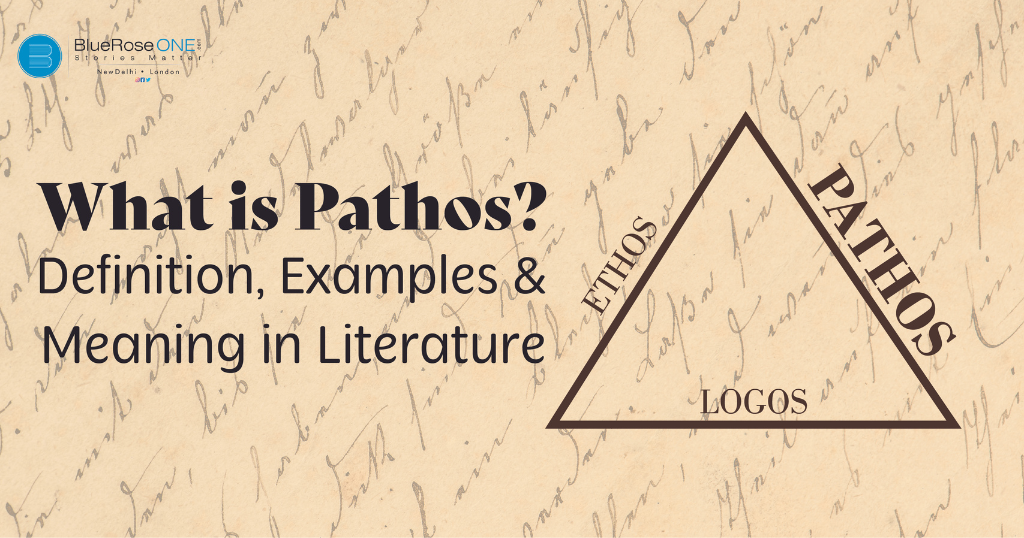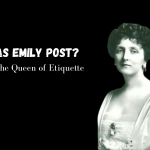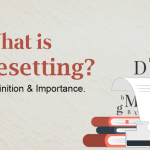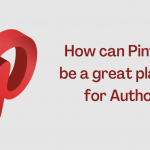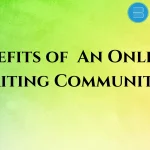Pathos, one of the three primary modes of persuasion alongside ethos and logos, is a powerful and essential element in literature and rhetoric. It taps into the emotions and empathy of the audience, making it a key tool for writers and speakers to connect with readers on a profound level.
Read: Learn How to Write Good Poetry: The Best Tips for Aspiring Poets
In this blog, we will explore the meaning of pathos, provide examples to illustrate its usage, and delve into its significance in literature and communication.
What is a simple definition of pathos?
Pathos can be defined as the emotional appeal used in communication to elicit feelings, empathy, and compassion from the audience. It’s a technique that relies on an emotional connection, often by evoking sentiments such as love, anger, pity, or sadness. Pathos aims to influence the audience’s judgement and actions through emotional engagement, making it a potent persuasive tool.
You may also read: About the Author Sudha Murthy: Inspiring Life and Literary Legacy
What are pathos and examples?
Pathos is a versatile tool that authors and speakers employ to create emotional resonance with their audience. Here are some examples of pathos in action:
- Literature
Example 1: “To Kill a Mockingbird” by Harper Lee In this classic novel, Harper Lee uses pathos to provoke empathy for the character Tom Robinson, a black man falsely accused of raping a white woman. Lee’s vivid portrayal of Tom’s struggles and his unjust treatment invokes a deep sense of injustice and sympathy in the reader, effectively highlighting the racial prejudice of the time.
Example 2: “The Fault in Our Stars” by John Green John Green’s novel explores the lives of two teenagers, Hazel and Augustus, both battling cancer. The emotional depth of their relationship, the challenges they face, and their ultimate fate all tap into the readers’ emotions, eliciting both sadness and a profound connection with the characters. - Speeches
Example 3: Martin Luther King Jr.’s “I Have a Dream” Speech In his iconic speech, Dr. King uses pathos to stir the emotions of his audience and inspire them to take action. He speaks of the dream of racial equality and paints a vivid picture of a brighter future. His words connect with the deep longing for justice and equality, invoking strong emotions in the listeners. - Advertising
Example 4: SPCA Animal Shelter Commercial animal shelters often employ pathos in their advertisements to encourage pet adoption. Heartfelt images and stories of abandoned and mistreated animals aim to trigger empathy, leading to a stronger inclination to adopt or support these animals.
You may also like: How to Publish a Book? | Publish Your Book | BlueRoseOne
What is pathos in literature?
Pathos in literature is a storytelling technique that aims to create an emotional response in the reader. It is used to draw readers into the narrative, making them feel connected to the characters, their struggles, and the overall theme of the work. Here’s how pathos operates in literature:
- Character Development
Authors often use pathos to create relatable and empathetic characters. By exploring their vulnerabilities, challenges, and emotions, writers draw readers into the characters’ journeys. The emotional investment in these characters intensifies the readers’ connection to the story.
Example: In Charles Dickens’ “Oliver Twist,” the character of Oliver, an orphan struggling to survive, elicits readers’ empathy and compassion, leading them to root for his well-being. - Evoking Emotion
Pathos is employed to evoke various emotions within the reader, such as sympathy, sorrow, joy, or anger. By appealing to the reader’s emotions, authors create a more engaging and memorable reading experience.
Example: In William Shakespeare’s “Romeo and Juliet,” the tragic love story between the young protagonists, who come from feuding families, invokes strong feelings of love, empathy, and sorrow as the events unfold. - Addressing Universal Themes
Pathos is used to explore universal themes and issues, allowing readers to connect with the story on a personal and emotional level. This connection enables readers to reflect on their own experiences and beliefs.
Example: In George Orwell’s “Animal Farm,” the allegorical tale of power and corruption in a society of animals engages readers emotionally as they contemplate the broader implications of the story for human societies. - Moral and Ethical Dilemmas
Authors use pathos to present moral and ethical dilemmas that challenge readers’ values and beliefs. This emotional engagement prompts readers to consider the choices made by the characters and reflect on their own moral compass.
Example: In J.K. Rowling’s “Harry Potter” series, the character Severus Snape raises ethical questions about redemption, loyalty, and love, creating an emotional and moral quandary for readers.
You may also like: What is a Preface? Key Characteristics with Exmaples
You may also like: The Housemaid Series in Order: A Complete Reading Guide
What is the Significance of Pathos in Literature and Communication
Pathos plays a crucial role in literature and communication for several reasons:
- Emotional Connection: Pathos allows authors to connect with their audience on a deep emotional level. Readers or listeners become more invested in the narrative when they feel empathy or sympathy for the characters and their experiences.
- Persuasion: In persuasive writing and speeches, pathos is employed to sway opinions and encourage specific actions. By tapping into emotions, speakers and writers can influence their audience’s decisions and beliefs.
- Memorability: Content that evokes strong emotions tends to be more memorable. Readers are more likely to remember and share stories or speeches that make them feel deeply, ensuring a lasting impact.
- Understanding Complex Issues: Pathos is a valuable tool for simplifying and conveying complex issues or themes. Emotional stories and examples make it easier for readers to grasp the essence of challenging concepts.
- Universal Relevance: Emotions are a universal language. Pathos transcends cultural and linguistic barriers, making it a potent means of conveying messages to diverse audiences.
- Empathy and Compassion: Through pathos, literature and speeches can foster empathy and compassion, encouraging individuals to understand and care about the experiences and challenges of others.
In conclusion, pathos, as an essential component of literature and communication, serves as a bridge that connects creators and their audience emotionally. It invites readers and listeners to engage with stories, characters, and ideas on a profound level, making it a potent and indispensable tool in the art of persuasion and storytelling.
Read: A Complete Guide on How to Make Your Book an International Bestseller
By understanding and effectively using pathos, authors and speakers can create narratives that resonate deeply with their audience, leaving a lasting impact.

